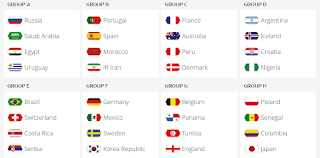Since the launch of the new ITF World Tour, a lot of criticism has been raised, mainly about the fact that most players cannot enter any tournament, and these include top college players, which are shown to be suited well for Pro Tennis.
What I would like to present here, is that even for players who can get into tournaments under the new system, including ITF top 100 juniors, it would be almost impossible to break through.
The women's path has became much harder and longer, but the biggest problem is on the men's side, since there are no qualifying places to ATP Ranked players (seems counter-intuitive, but I'll show why it is the case).
As you might know, the new system has two separate ranking systems - ITF World Tennis Rankings for ITF tournaments (15K$ and 25K$), and ATP Rankings for Challengers and above.
The problem is, that each tournament lasts for its relevant rankings for only 12 months.
That means that in a time-span of 12 months, a player should have a high enough ITF Rankings (about 20th) to be able to enter ATP challengers, and then also high enough ATP Rankings (about 320th) to be able to continue enter ATP Challengers using the ATP Rankings.
Let's look at the top 20 ITF players and do the math:
These players played 16 ITF tournaments where they achieved 54 ITF Points in each one of them (on average).
In order to be ranked 20th which would be enough in order to enter some challengers, 740 points are enough, which equals to five M25 wins!,
On average it would take a top 20 ITF player 14 tournaments to achieve that. Let's say a player plays 14 tournaments in 6 months time span (which is quite a lot of play given he had to go deep in some of them). Then, he has only 6 month until his ITF points starts to drop and he can no longer enter ATP Challengers using his ITF Rankings.
He needs about 90 ATP Points during the 6 months in order to be ranked 320th in the world. The player ranked 250th on the ATP achieve exactly double this amount of points in a full year (180 points), and remember some of the players around that ranking had also access to ATP and Grand Slam Qualifying, where they could get their points from.
So in order to be able to be ranked 320th in the world, our player who only have 6 months need to have a better performance than the 250th best player in the world, in a 12 months time where he had to play about 28 tournaments - that just to get into the cycle of playing ATP challengers! How crazy is that?
Now remember that if our player missed the needed points even by a little, he needs to start over on the ITF almost from scratch, since his ITF Ranking points would start to drop*. The exception to that is of course getting a WC, but players that are not from established Tennis countries don't have this luxury.
The solution might be to either go back to one unified ranking system, or to have a tour card for a full year, where a player can have access to ATP Challengers, as it is being done at both professional Golf and Snooker.
* Unlike ATP Rankings which are exponential in nature, the ITF Rankings tend to be linear, since many players can win tournaments in a given week, so using the ITF Rankings for Challengers Qualifying means that once ITF Points start to drop, a player's ITF Rankings drops dramatically.
** Combining ITF tournaments and Challengers on the player's schedule in order to have both rankings at the same time would actually lower the chances of becoming a regular ATP player. It does makes sense from a financial point of view of course.
